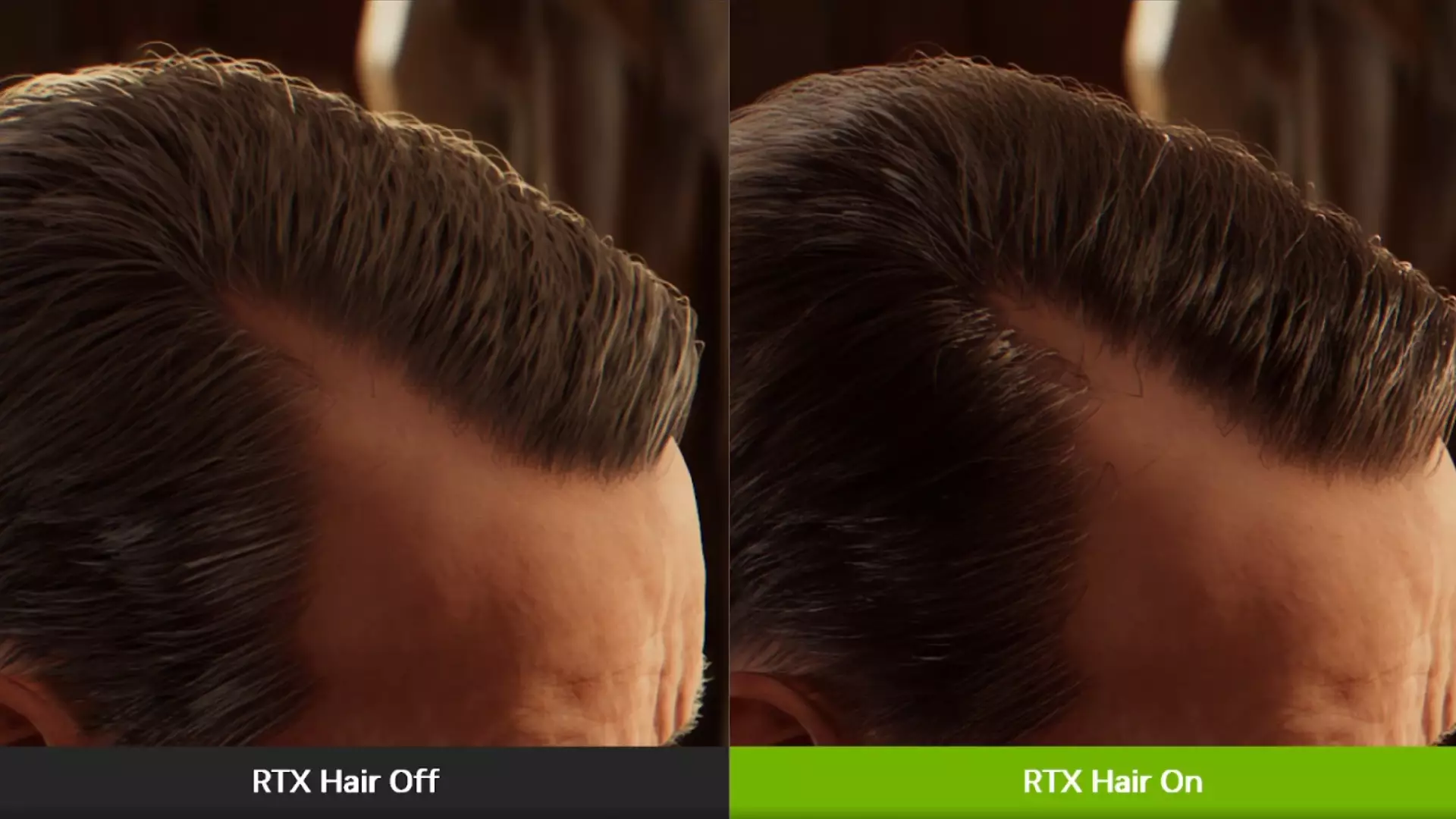Nvidia’s latest innovation in graphics technology promises to transform the way digital characters wear their hair. For years, game developers struggled to balance visual realism with performance constraints, often settling for stylized or grainy hair effects that detracted from immersion. The introduction of RTX Hair technology marks a significant leap forward, offering the promise of lifelike, dynamically rendered hair that enhances storytelling and character design. Unlike older methods that relied heavily on geometry and tessellation—techniques notorious for taxing system resources—RTX Hair employs a fundamentally different approach that prioritizes both realism and efficiency.
This unique capability is more than just a visual upgrade; it challenges longstanding assumptions about what is achievable within the constraints of real-time rendering. By leveraging the power of NVIDIA’s RTX 50-series graphics cards, this technology redefines the standards for character realism. It delivers hair that reacts naturally to lighting, shadows, and environmental effects, making characters seem more tangible and emotionally resonant. This is not merely a cosmetic enhancement; it fundamentally changes how players connect with digital personas.
The Technical Marvel Behind the Magic
At the core of RTX Hair lies a sophisticated rendering method known as Linear Swept Spheres (LSS). Compared to traditional polygon-based strands, LSS treats each hair fiber as a dynamic primitive that can be manipulated fluidly. This shift means that individual strands are no longer restricted to static triangles, which tend to result in grainy and unnatural appearances. Instead, LSS ensures that each strand conforms more accurately to the fluid movement of real hair, capturing subtle nuances like flow and bounce.
Nvidia states that this approach offers several advantages. First, it delivers a significant reduction in memory usage—critical for maintaining performance and frame rates during intense gameplay. Second, it allows for more precise lighting and shadow effects. This coordination of light with individual hair strands creates a depth and realism that was previously unattainable in real-time environments. Harrison Ford’s rugged, charismatic hair in Indiana Jones may just be the first glimpse of what future game characters will look like with RTX Hair, sporting natural shine, intricate shadows, and lifelike movement.
Lessons from the Past and a Future of Style
Historical hair rendering techniques, such as Nvidia’s HairWorks, paved the way for more elaborate effects in titles like The Witcher 3. These early methods utilized tessellation and physics simulations that, while impressive at the time, often caused performance bottlenecks. Players frequently had to disable high-quality hair settings because they were too demanding for their hardware, sacrificing visual flair for smoother gameplay.
However, RTX Hair promises to change this dynamic profoundly. By reducing the computational overhead usually associated with detailed hair simulations, it makes the realistic depiction of complex hairstyles feasible even on mid-range systems. The hope is that developers will embrace this technology to craft characters with more emotional depth and aesthetic appeal, ultimately elevating the narrative experience. Imagine a game where every lock of hair responds naturally to wind and movement, adding emotional nuance that subtitles or voice acting alone cannot convey.
What Lies Ahead for Hair in Video Games?
Despite the significant technical advancements, skepticism remains. Past attempts, like Nvidia HairWorks, showed that high-quality hair effects could compromise frame rates and overall game performance. The question now is whether RTX Hair can achieve the delicate balance between visual fidelity and performance preservation. Early impressions suggest it has the potential, but broader adoption and developer support will determine its long-term impact.
What excites many enthusiasts is the prospect of a visual renaissance, where characters no longer look static or artificial but instead embody a sense of liveliness and individuality through their hair. This progress could pave the way for more immersive storytelling, where visual realism enhances emotional engagement. It also raises questions about how far this technology could go—could we see fully dynamic, physics-driven hair on large open-world characters or even in multiplayer settings? The possibilities are tantalizing.
Finally, the true test lies in whether this innovation becomes a standard rather than a luxury feature. If developers embrace RTX Hair and optimize it effectively, we could soon see a new benchmark for character design—one where hair is no longer a limitation but a powerful element of storytelling. While the journey still has hurdles, the potential for creating gamers’ visual fantasies is clearer than ever.

